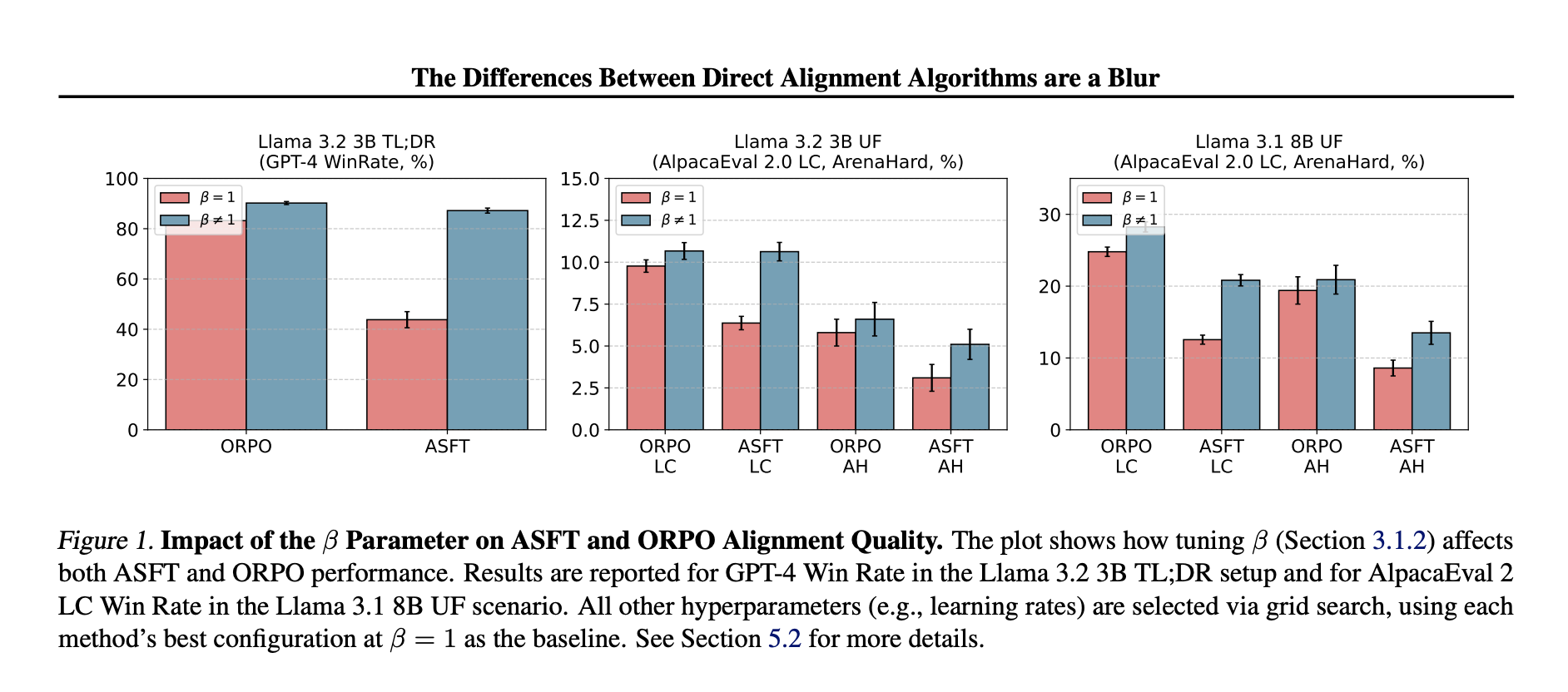
Aligning AI with Human Values
Aligning large language models (LLMs) with human values is challenging due to unclear goals and complex human intentions. Direct Alignment Algorithms (DAAs) simplify this process by optimizing models directly, without needing reward modeling or reinforcement learning.
How DAAs Work
DAAs use various ranking methods, such as:
- Comparing pairs of outputs
- Scoring individual responses
Some DAAs require additional fine-tuning, while others do not. Evaluating their effectiveness is complicated by differences in reward definitions and applications.
Current Methods and Challenges
Traditional methods for aligning LLMs involve multiple complex steps, including:
- Supervised fine-tuning (SFT)
- Reward modeling
- Reinforcement learning
These methods can be costly and complex. DAAs aim to optimize models based directly on human preferences, avoiding the pitfalls of traditional methods.
Improvements in DAAs
To enhance single-stage DAAs like ORPO and ASFT, researchers suggest adding a supervised fine-tuning phase and introducing a scaling parameter (β). This adjustment improves performance, making it comparable to more complex two-stage methods.
Experimental Validation
Researchers tested DAAs using various datasets and found:
- ORPO and ASFT showed significant improvements with SFT.
- Adjusting the β parameter led to notable performance increases in different models.
These findings highlight the importance of structured ranking signals for better alignment quality.
Future Directions
The research provides a solid foundation for future studies in model alignment, suggesting that these methods can be applied to larger models with diverse datasets to further refine alignment techniques.
Explore Our AI Solutions
If you want to enhance your company with AI, consider the following steps:
- Identify Automation Opportunities: Find key areas where AI can improve customer interactions.
- Define KPIs: Ensure your AI projects have measurable impacts.
- Select an AI Solution: Choose tools that meet your specific needs.
- Implement Gradually: Start with pilot projects, gather data, and expand wisely.
For AI KPI management advice, contact us at hello@itinai.com. For ongoing insights, follow us on Telegram or @itinaicom.
Discover More
Learn how AI can transform your sales processes and customer engagement. Explore our solutions at itinai.com.

























